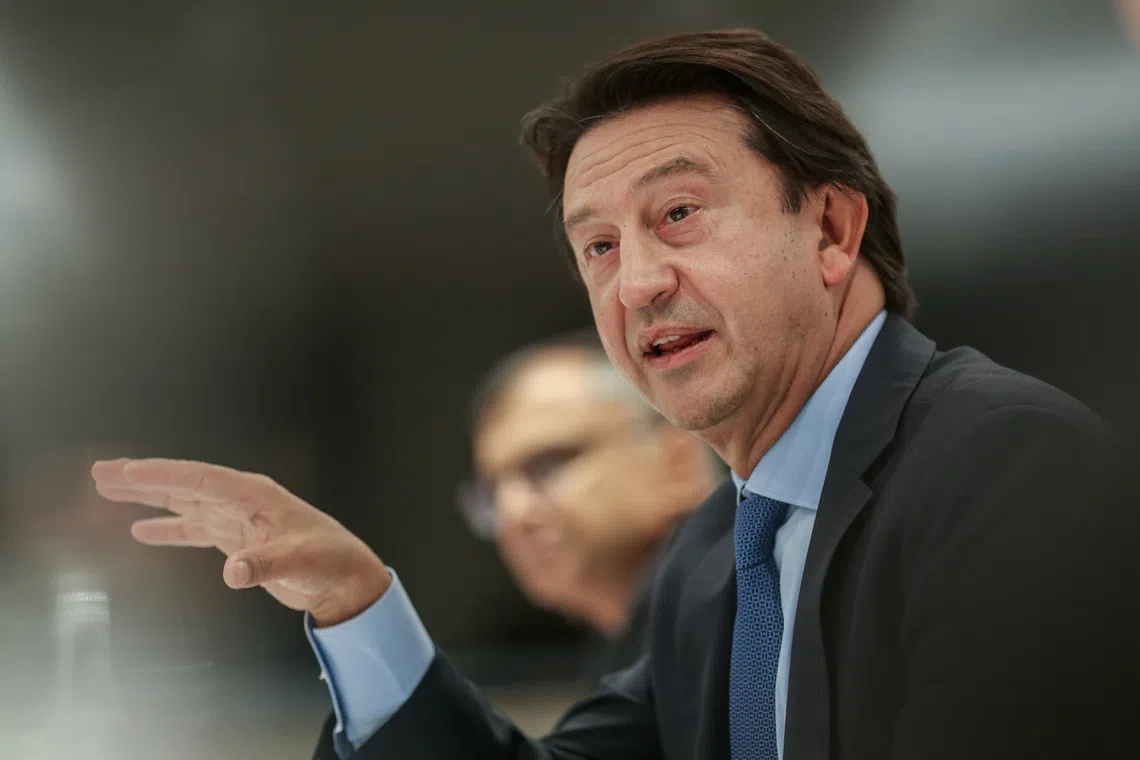Hyundai pivots to hybrids as it unveils US$5 billion India plan
The move comes as the automotive industry has moved away from ambitious targets for EV sales outside of China, following a hybrid-oriented path pioneered by Toyota Motor
[DELHI] Hyundai Motor is steering its growth in one of its largest markets towards hybrid vehicles, signalling a pragmatic pivot away from a previous focus on all-electric cars.
At its first investor day in Mumbai on Wednesday (Oct 15), the South Korean automaker outlined a US$5.1 billion investment plan for India through 2030, with hybrid petrol-electric vehicles (EVs) taking centre stage to bridge the gap to full electrification. It plans to have eight hybrid SUVs across varying price points in its portfolio by the end of the decade, along with five EVs.
“It takes time for consumers to adjust,” Jose Munoz, Hyundai’s chief executive officer, told reporters. “Range anxiety and cost remain real barriers, and that’s where hybrids come in,” he said, adding that hybrids are a critical step for India, which is constrained by patchy charging infrastructure and price sensitivity among buyers.
The plan, adopted by both Hyundai and sister brand Kia, underscores how carmakers are broadening their lineups globally to meet both stricter rules on emissions and lower-than-expected EV demand. India’s draft emissions policy has undergone a similar shift from EV-centric ambitions towards promoting hybrids and other alternatives as part of a multi-fuel roadmap.
The move comes as the automotive industry has moved away from ambitious targets for EV sales outside of China, following a hybrid-oriented path pioneered by Toyota Motor.
Hyundai aims for its fleet of electrified vehicles, including hybrids, battery-only and range extenders, to comprise 60 per cent of global sales by 2030, targeting 3.3 million units annually. In India, the company has set a goal of US$11 billion in sales by decade’s end.
Munoz highlighted India’s strategic importance for Hyundai, noting it’s grown from 11 per cent of global sales in 2020 as the company’s fifth-largest region to 15 per cent of sales today as the third-largest region. By 2030, he said that Hyundai expects India to become the second-largest region in sales volume globally behind only North America.

Premium positioning
Even so, the Korean carmaker is aiming for a modest boost in India market share to a little more than 15 per cent by 2030, emphasising premium price positioning rather than aggressive expansion. “We don’t see value in expanding share for the sake of it if we are not making money,” Munoz said. “It’s better to have sustainable, profitable growth.”
Hyundai’s investment will go into factory upgrades, more localised R&D and battery manufacturing to support the launch of 26 new or refreshed models through fiscal 2030, including seven all-new nameplates. The product offensive is back-ended, with most of the newest vehicles slated to debut in the last two years.
From 2027, Hyundai will introduce made-in-India Genesis luxury brand vehicles to challenge upscale rivals such as BMW and Mercedes-Benz Group, as well as a compact EV tailored for urban Indian consumers. India’s nascent charging network and a tax regime which has narrowed the difference in levies on EVs and hybrids provide policy support for Hyundai’s hybrid bet.
Globally, Hyundai sees hybrids outpacing EVs in markets such as the US, where Munoz said that “EVs are still growing 10 to 20 per cent a month, hybrids are growing 60 to 80 per cent.” He emphasised flexibility, adding that “if customers want more EVs, we will produce more EVs. If they want hybrids, we will do hybrids. We are not here to tell consumers what to drive. We are here to respond to what they want.”
That contrasts with local rivals such as Tata Motors and Mahindra & Mahindra, which have so far leaned heavily into EVs. Hyundai’s plans also leverage its manufacturing agility with plants capable of producing multiple powertrains simultaneously to meet shifting consumer demands.
India CEO
In a milestone signalling its commitment to localising operations, the company appointed Indian executive Tarun Garg as managing director and CEO effective January 2026, the first non-Korean to lead its India business in 30 years. Garg, previously a director and COO, succeeds Unsoo Kim and will oversee the roadmap’s execution.
Hyundai’s India unit had a high-profile listing last year and the shares have surged 34 per cent this year, beating the 5.7 per cent rise in the benchmark S&P BSE Sensex.
With SUVs projected to drive 80 per cent of its India sales and strategic partnerships, including a battery-supplier agreement with Exide Industries, Hyundai also is positioning India as a key export hub.
Munoz said that the South Korean carmaker plans to increase vehicle shipments from India to other markets such as the Middle East and is targeting exporting 30 per cent of its India production. “India is not a part of Hyundai’s globalisation strategy, India is the strategy,” he said. BLOOMBERG
Decoding Asia newsletter: your guide to navigating Asia in a new global order. Sign up here to get Decoding Asia newsletter. Delivered to your inbox. Free.
Share with us your feedback on BT's products and services


